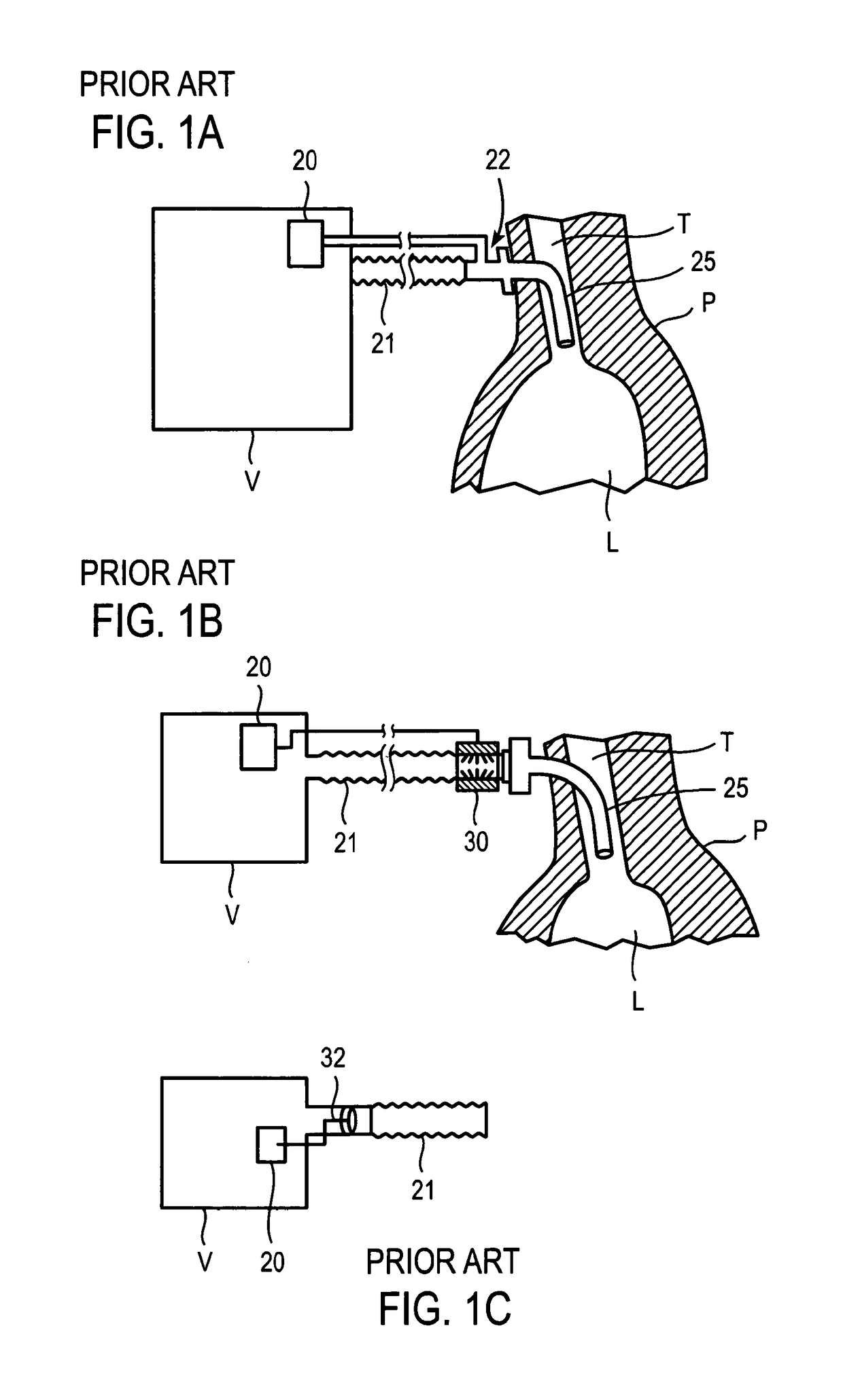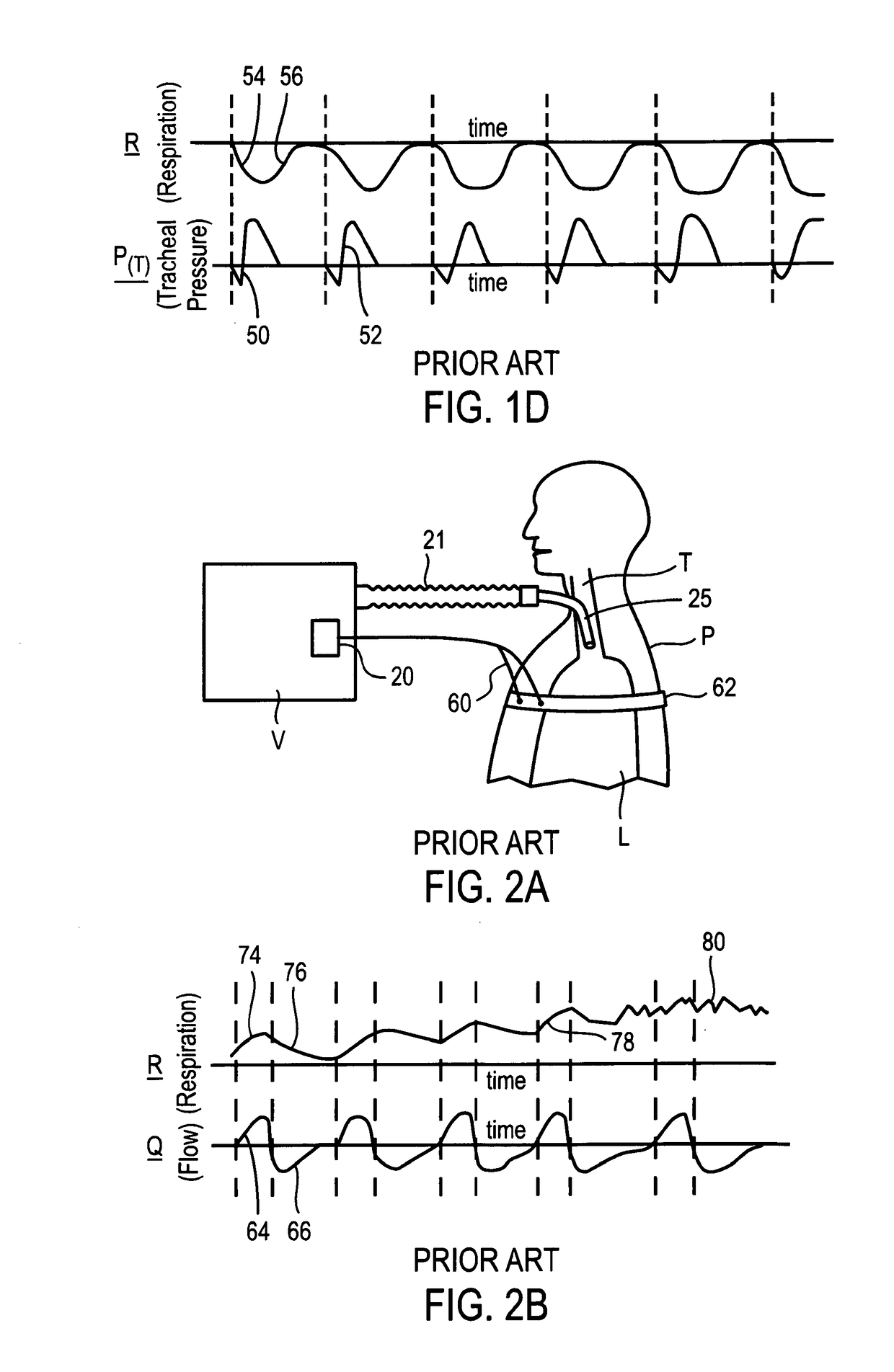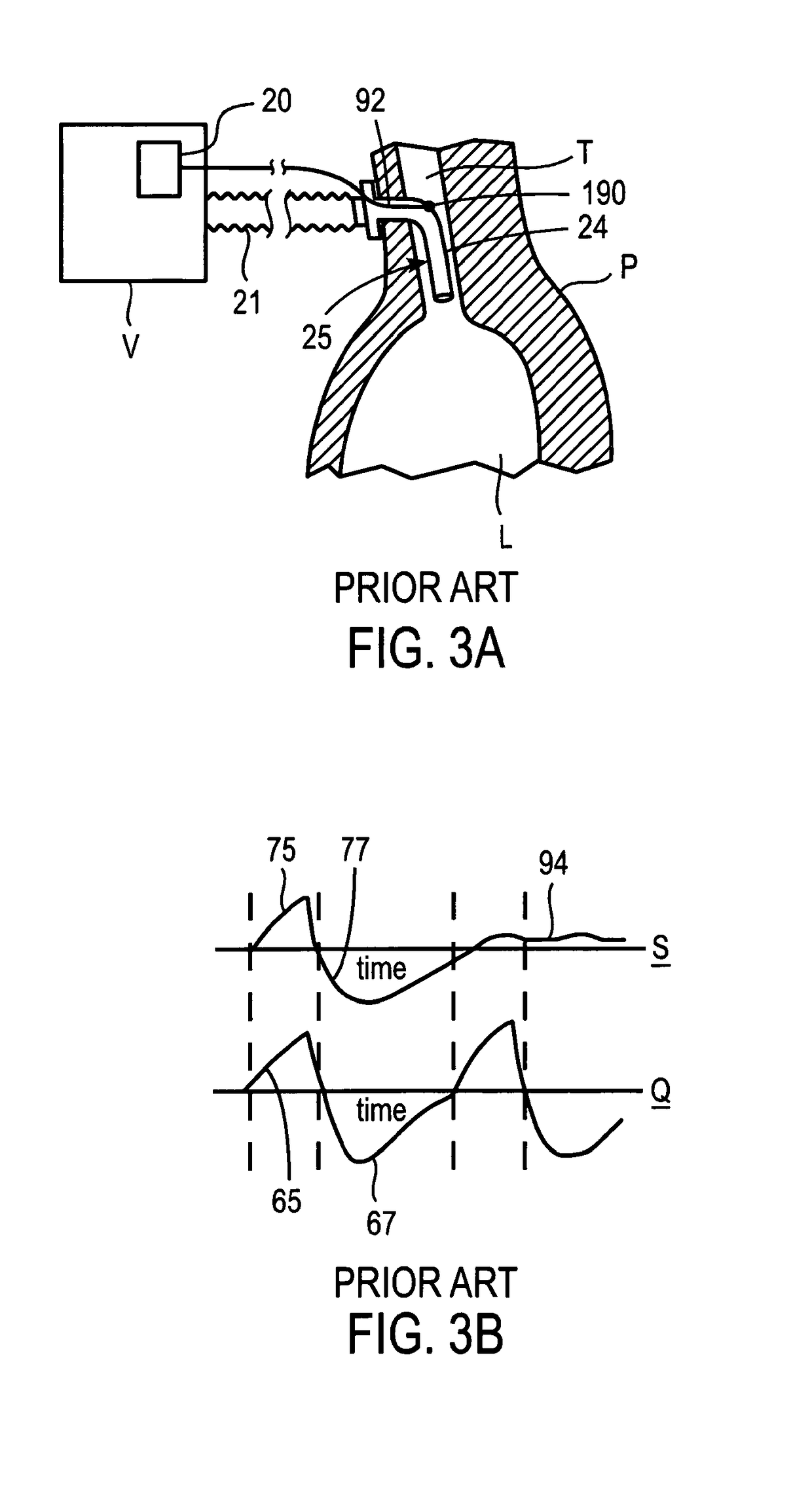Methods and devices for sensing respiration and providing ventilation therapy
a technology of respiration and sensing devices, applied in medical science, diagnostics, other medical devices, etc., can solve the problems of sensor no longer measuring the respiration of patients, and sensor insufficient measurement of the entire respiratory curv
- Summary
- Abstract
- Description
- Claims
- Application Information
AI Technical Summary
Benefits of technology
Problems solved by technology
Method used
Image
Examples
Embodiment Construction
[0063]FIG. 1a shows a prior art ventilator breath detection triggering system where a pressure sensor is located within a ventilation gas delivery circuit 21. A ventilator V may deliver ventilation gas to a patient P through a ventilation gas delivery circuit 21 and a ventilation tube 25. A ventilation circuit pressure tap 22 may be located within the ventilation gas delivery circuit 21. The ventilation circuit pressure tap 22 may sense pressure in the ventilation gas delivery circuit 21. Thus, when the patient P inspires, a negative pressure created in the lung L may be transmitted to the trachea T, and the negative pressure may be detected in the ventilation circuit pressure tap 22. The ventilation circuit pressure tap 22 may be in communication with a ventilator breath delivery control unit 20.
[0064]Alternatively, as shown in FIG. 1b, a flow sensor may be used in place of the pressure sensor. The flow sensor may be an ultrasonic flow sensor 30 or another type of flow sensor. Alte...
PUM
 Login to View More
Login to View More Abstract
Description
Claims
Application Information
 Login to View More
Login to View More - R&D
- Intellectual Property
- Life Sciences
- Materials
- Tech Scout
- Unparalleled Data Quality
- Higher Quality Content
- 60% Fewer Hallucinations
Browse by: Latest US Patents, China's latest patents, Technical Efficacy Thesaurus, Application Domain, Technology Topic, Popular Technical Reports.
© 2025 PatSnap. All rights reserved.Legal|Privacy policy|Modern Slavery Act Transparency Statement|Sitemap|About US| Contact US: help@patsnap.com



